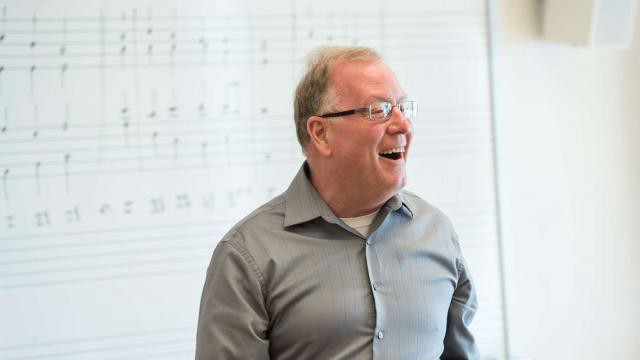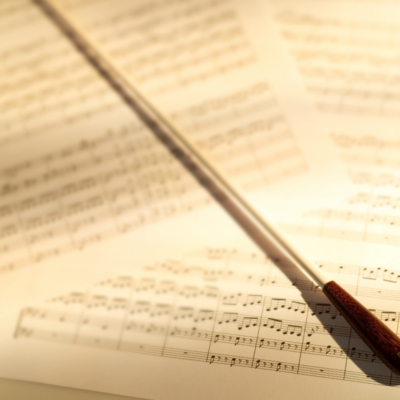An American icon’s best loved works and a returning virtuoso feature in the California Symphony’s 2018–19 season opener—Sunday, September 23, at 4pm, at the Lesher Center in Walnut Creek. Read Scott Foglesong’s program notes here.


PROGRAM: BEETHOVEN & BERNSTEIN
Sunday, September 23, at 4pm, at the Lesher Center in Walnut Creek
Overture to Candide (1956) — by Leonard Bernstein (1918–1990)
Piano Concerto №3 in C Minor, Op. 37 (1803) — by Ludwig van Beethoven (1770–1827)
Three Latin-American Dances for Orchestra (2003) — by Gabriela Lena Frank (b. 1972)
Symphonic Dances from West Side Story (1961) — by Leonard Bernstein
Leonard Bernstein (1918–1990): Overture to Candide (1956)
Chic celebrity he may have been, bellwether of contemporary American life, his patrician features and cultivated New England voice familiar to millions from his many appearances on radio and television. And yet Leonard Bernstein was something of a throwback to an earlier age when to be a musician meant to encompass the whole of the art rather than to segregate oneself into a well-defined specialty. Like those multitudinous kapellmeisters who peppered Europe from the 17th through 19th centuries, Bernstein could do everything. And he could do it all well: composer, conductor, pianist, teacher, writer.
But he didn’t always succeed. Consider his 1956 Broadway “comic operetta” Candide: It bombed, despite having a libretto by no less than Lillian Hellman, despite being directed by no less than Tyrone Guthrie, and despite starring no less than Robert Rounseville and Barbara Cook. Rather than allow his Voltaire-based brainchild to slink away to the Bardo of failed shows, Bernstein kept on revising and rewriting, starting with the 1959 London production and continuing on for decades with an assortment of collaborators. Nor did it all end with Bernstein’s death in 1990. As of 2018 Candide sports as many upgrades as Microsoft Windows.
The Overture has persisted through it all as a popular concert staple. Vivacious, witty, and ever so manic, it whizzes by in a whirlwind of orchestral pyrotechnics. Along the way it serves up a number of tunes from the show, including Glitter and Be Gay — that canary-on-steroids throat-scorcher that some listeners might remember as the theme music for Dick Cavett’s various TV shows.
Ludwig van Beethoven (1770–1827): Piano Concerto №3 in C Minor, Op. 37
“String Snapper, Hands on High” was critic Harold C. Schonberg’s title for the Beethoven chapter in The Great Pianists. The description is apt. Easily the most electrifying pianist of his generation, spellbinder of audiences and scourge of piano tuners, Beethoven brought something altogether new to the yet-green art of piano playing: pure animal magnetism. As he aged and his hearing deteriorated along with his overall health, wrong notes began to crowd out the right ones, but his laser-like intensity never faltered.
Piano Concerto №3 in C Minor dates from the beginning of Beethoven’s “Middle Period,” a.k.a. his full artistic maturity, when his output began to resemble a fusillade of musical thunderbolts emanating from the right hand of an over-stimulated Zeus. Music would never be the same after that decade-long bombardment; in fact, one could characterize the ensuing 19th century as a collective attempt to come to grips with, and mop up after, Beethoven’s volcanic Middle Period.
Even if the Third Concerto is putatively in the darkly dramatic key of C Minor, its first movement is quite the journey through a mélange of keys, moods, and affects. Almost right up to the end Beethoven manages to sidestep an easy resolution until absolute necessity dictates a proper wrap-up.
The second-place Adagio, one of the noblest movements in Beethoven’s concertos, could stand alone as an independent work of the Rhapsody variety. Just how far the piano had evolved in the mere ten years since Mozart’s last piano concerto is demonstrated by the middle section, in which a silvery haze from the piano accompanies and supports statements from the winds. Soon enough (too soon, it often seems) the final measures are reached, and in a sudden lurch the masterful third-place Rondo is propelled into action by the solo piano.
Beethoven’s finale has served as the inspiration and model for any number of later composers. Its square-jawed main theme turns out to be the inexhaustible source of the materials that follow, as Beethoven adroitly leaps over every pitfall of a form prone to stupefying tedium due to its periodic repeats. To conclude, Beethoven transforms that originally stern theme into the stuff for a dazzling celebratory frolic.
Gabriela Lena Frank (b. 1972): Three Latin-American Dances for Orchestra (2003)
“Perhaps there are other disciplines that I could have aimed my life at — I seriously considered political science and law — and who knows where those roads would have led? But my sense of self has developed inexorably along the simple principle of storytelling and creating objects of beauty through sound, leaving the earth hopefully a bit better.”
Thus wrote Gabriela Lena Frank, a notably successful practitioner of a profession not particularly noted for successes. Her influences and inspirations reach far beyond her native Berkeley, including Latin America (Peru in particular), Asia, and Eastern Europe. Frank tells us that the first of her Three Latin-American Dances for Orchestra of 2003 opens as an “unabashed tribute to the Symphonic Dances from West Side Story by Leonard Bernstein.” The second-place Highland Harawi evokes the mountainous mysteries of the Andean world, while the concluding Mestizo Waltz lightens the mood by celebrating the kaleidoscopic mestizo music of the South American Pacific coast.
Leonard Bernstein: Symphonic Dances from West Side Story (1961)
Bernstein’s theatrical masterpiece West Side Story, with lyrics by a then-unknown Stephen Sondheim and book by Arthur Laurents, opened to solid, if not overwhelming, success at New York’s Winter Garden Theater on September 26, 1957. A dramatic departure from Broadway norms in its threading of Jerome Robbins’s deeply integrated dance routines throughout an urban update of Shakespeare’s tragedy Romeo and Juliet, West Side Story constitutes a sophisticated hybrid of musical and ballet, the whole empowered by Bernstein’s magnificent, and now iconic, score.
In 1961, four years after the Broadway premiere, Bernstein assembled an orchestral suite that follows the show’s plot mostly via its dance routines, including songs such as “Somewhere,” later fused with “I Have a Love” in the tragic Finale. A point of particular interest: Bernstein’s skillful variants of the ecstatic love song “Maria” in both the “Cha-Cha” and the “Meeting Scene” as Tony and Maria discover each other, followed by an up-tempo variation of the same melodic figure as the nervous Jets dance the “Cool” fugue immediately before their climactic rumble with the Sharks.
Program Annotator Scott Foglesong is the Chair of Musicianship and Music Theory at the San Francisco Conservatory of Music, and a Contributing Writer and Lecturer for the San Francisco Symphony.
The California Symphony’s season opener BEETHOVEN & BERNSTEIN takes place on Sunday, September 23 at 4 PM at the Lesher Center for the Arts in Walnut Creek.
Visit www.californiasymphony.org for tickets and more information.



